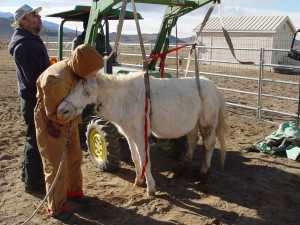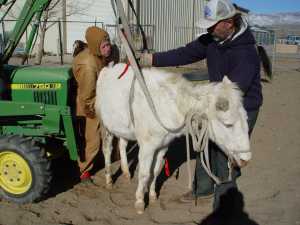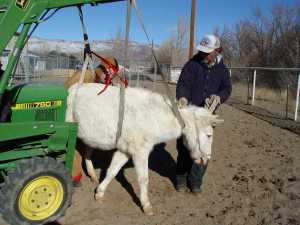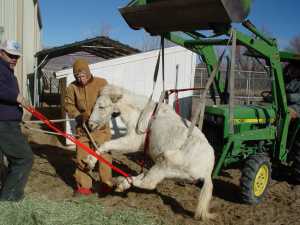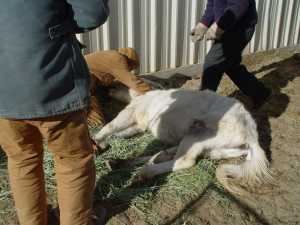Emergency ImprovisationsFashioning an Emergency Quick Sling
|
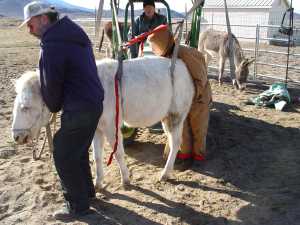
|
© 2004, Willis & Sharon Lamm
|
Our objective at this point was to assist Bill to his feet. One person stayed at his head and we gently lifted him up.
At this point he was able to stand on his own so we lowered the bucket just enough to take off pressure but kept it in place in case he were to fall. |
Supporting his head
|
| Now we were ready to see if Bill could walk. With assistance he was able to take some wobbly steps. We kept the bucket overhead with slight tension on the sling in case he lost his balance. |
Walking Bill
|
|
Since Bill didn't want to walk if someone was holding his head, we used the running end of the strap to help support and guide Bill's head. This was applied with light pressure, mainly under the jawbone, to prevent the strap from choking him.
(Although we don't have a photo, the strap was properly positioned prior to applying any pressure.) |
Getting ready to guide Bill's head
|
|
Bill wasn't strong enough to walk all the way to shelter. On smoother terrain we would have probably fashioned a drag using a tarp. In this instance we gently lifted his legs and hauled him to a sheltered area.
Supporting his legs prevented him from swinging back and forth while being moved. |
Legs controlled whole moving
|
| Once out of the cold wind, Bill was laid back down. He suffered no additional injuries from being moved. Unfortunately he was extremely shocky from the beginning of this ordeal and while no longer shivering from hypothermia, Bill quietly passed away a short time later. |
Placed in a sheltered area
|
|
Note:
Work slowly and methodically whenever improvising a sling. Use common sense and always consider the safety of rescuers first and the safety of the animal next. We tend to want to resolve these kinds of situations in a hurry but it's no good if haste causes a mistake or miscalculation that results in an injury to a rescuer or to the animal.
Depending on where the lifting operation takes place, this can be a scary process. Develop a practical plan, use common sense, communicate well and work as a team and you can maximize your chances for success. |
Return to Part OnePress Back to return to the page which brought you hereReturn to KBR Quick Tips Index PageReturn to KBR Horse Health SectionGo to KBR Safety SectionGo To
|

